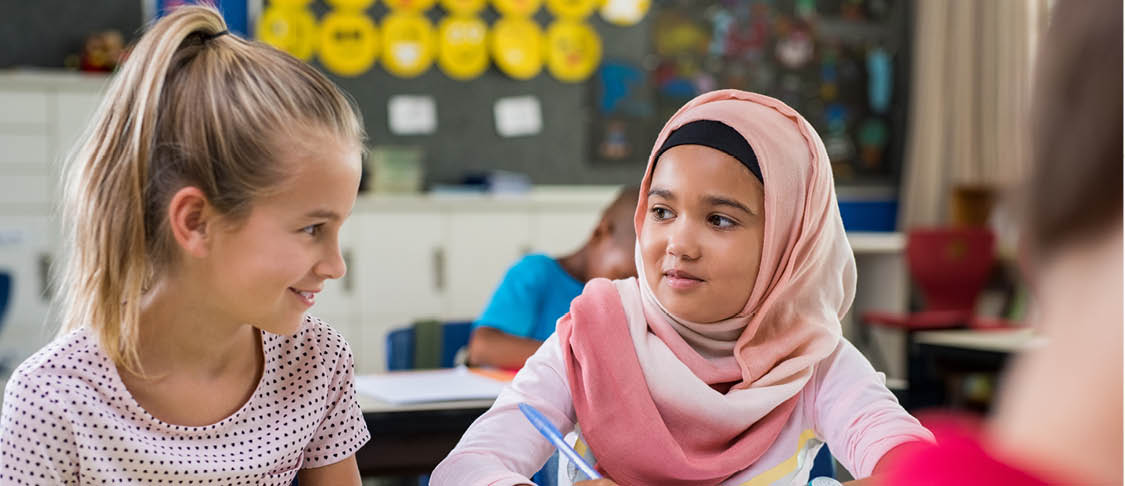
Sister school partnerships and Foreign Relations Act
The Commonwealth Government has introduced new legislation that impacts how Victorian government schools engage with international counterparts.
Under the Australia's Foreign Relations (State and Territory Arrangements) Act 2020 (the Act), arrangements between Victorian government schools and foreign entities must be consistent with Australia's foreign policy objectives.
The Act requires Victorian government schools to submit a proposal to the Australian Department of Foreign Affairs and Trade for consideration by the Australian Minister for Foreign Affairs, prior to negotiating and entering into written arrangements with foreign entities.
This extends to any written arrangements, agreements, contracts or memoranda of understanding and sister school partnerships between Victorian government schools and foreign entities, including overseas governments, universities, and other schools.
These written arrangements may be:
- in any form
- unsigned or not legally binding
- informal communication relating to written arrangements (depending on the content), including emails.
To learn more about prospective sister school arrangements process flow, see
Process Maps or read the
FAQs to understand the implications of the Act on sister school partnerships.
For more information, guidance and resources, refer to the Policy and Advisory Library (PAL)
Sister School Partnerships Policy.
Sister school partnerships
A sister school partnership can improve student learning and outcomes. Sister school partnerships are meaningful, reciprocal and sustainable long-term partnerships between two schools, aimed at fulfilling a range of purposes as determined by the school communities.
A school can have a sister school partnership with another Victorian government school, a school from another school sector (i.e. Independent or Catholic), or with an inter-state or overseas school in another country. School partnerships should be based on mutual benefit and reciprocity.
Some of the aims of having school partnerships can be to:
- broaden students' perspectives
- develop students' intercultural understanding
- enhance student language learning
- contribute to a whole school program of internationalisation
- build teacher capacity.
Benefits of sister school partnerships
Research tells us that sister school programs have a significant and positive effect on the global awareness and attitudes of school students. The benefits are of greatest significance during the third year of a school partnership when it becomes well established.
An effective sister school partnership can have profound and positive impact on a range of areas of school education, including:
- student learning
- teacher capability
- curriculum, including language learning and intercultural understanding
- whole school improvement
- community engagement.
For students, benefits include:
- development of intercultural understanding, global citizenship and an appreciation of different points of view
- development of 21st century skills to enable critical thinking, cross-cultural collaboration and a positive attitude to diversity
- greater competency and confidence in language learning and communication skills and renewed enthusiasm for language learning
- development of international friendships and networks.
For school staff, benefits include:
- opportunities to benchmark practice against other school systems
- development of intercultural understanding and sensitivity, and an appreciation of different points of view
- increased awareness of different education systems, including pedagogies and curriculum
- greater competency and confidence in language learning and communication skills.
- For the school community, benefits include:
- development of global networks and perspectives, with the flow-on effect of internationalising the outlook of the whole school community
- raising the profile of language learning across the school community.
Types of sister school partnerships
Sister school partnerships can take on different flavours. The right flavour for you is the one that fulfils the school's purposes according to the school's local need. Some partnerships are aimed at improving language learning, others are aimed at learning from world's best practice or teaching students how to be global citizens.
The Schools Connect Portal, a tool to facilitate the matching of sister schools is currently under review. We look forward to bringing you an improved tool soon.
In the meantime, if you would like to look for a school to partner with, either in Victoria or overseas, please check out the tables below and find a suitable school to make contact. If you would like to be included in the list, please complete the relevant form below and email it to
ied.stakeholder.engagement@education.vic.gov.au
Form for Victorian schools
Form for non-Victorian schools
List of Victorian schools interested in a sister school partnership
List of overseas schools interested in a sister school partnership
How to start a sister school partnership
Sister school partnerships provide authentic learning opportunities through engagement with students from other cultures, to build language and intercultural capabilities in a purposeful way. They can be a powerful tool in educating a generation of active, global citizens, and preparing them for a world that is increasingly interconnected.
Follow these four steps to start your sister school partnership.
Step 1: Assess the need for a Sister School Partnership
Careful consideration and planning is fundamental to successful and sustained sister school partnerships.
Before setting out to source schools for partnership, it is important to think through what you want from a sister school partnership. Consider your aims or what you want out of a possible sister school relationship, what you can offer potential sister schools and the type of school that might meet mutual needs.
Targeting a school when you have clear goals about what you want will help you to engage with the right sister school. It will also help you to secure commitment from your school community, giving the future partnership greater chances for success and longevity.
Sister school partnerships are not limited to partnerships with schools in other countries. For more information on establishing partnerships with inter-state schools or even with other schools in Victoria, see: Multiple school partnerships
Step 2: Finding the right partner school
You can also seek a sister school through:
Austrade and local councils
Community cultural associations, universities and non-profit organisations
Internet matching sites
Professional education networks.
Step 3: Making Contact
Once you have found a sister school that you think will be a suitable partner, it's time to make contact to introduce your school and assess the other school's interest and suitability.
In making the initial contact, an introductory letter from the principal can be sent, detailing what you aim to achieve through a partnership and clear actions and timelines about the types of projects and activities that you'd like to collaborate on. Try to establish regular communications by including contact details for your school and asking for a contact person from your partner school.
It is important to observe appropriate cultural protocols, including naming conventions and be courteous. Be formal rather than informal at this initial stage. For more information, see: Austrade Export Markets
You may also wish to include an accompanying information package or school brochure to provide further detail on your school.
Once the initial communication is exchanged, detailed information sharing around IT capabilities and timetables can also take place here, particularly if you are partnering with a school in a different time zone. Keep to the agreed arrangement and be respectful always. It is important at this stage to build trust.
Bear in mind that term dates, public holidays and exam times may occur at different times of the year compared to Victoria. So be realistic and considerate about the turn-around time during their busy times.
Step 4: Formalising the partnership
After collaborating for a while with your sister school, for example, through classroom link-ups via IT, visiting them overseas with your students or hosting them in Victoria, you may now want to formalise this agreement and make it on-going through a Memorandum of Understanding (MOU).
Whether you want to start small or big, it is useful to have a written agreement. Schools that have an MOU with their partnership school are significantly more likely to undertake teacher and student activities.
The written agreement should be simple but specific, with key outcomes and timelines. It is recommended to keep the agreement to a 3-5 year life, to allow revision to accommodate changed needs and expectations.
Some schools find it useful to have a high level agreement, but develop an action plan annually.
When negotiating the agreement, make it fair and remember it is an equal partnership where each can learn and contribute. For more information, see: Sister School Resource Kit
What makes a successful sister school partnership
Successful sister school partnerships have the following factors:
- Links to school policy / vision - Ensure that the type of partnership you plan is clearly linked to the school’s vision, e.g. If your school aims to build the number of students studying Indonesian to Year 12, then you could plan a sister school partnership based on language, with an Indonesian-speaking school.
- Commitment - As with all partnerships, it is important to nurture your sister school partnership and be realistic about what can be achieved in the short term. Before starting a partnership, ensure that you are clear about the time commitment and level of activity involved.
- Shared vision/Common interest - In order to ensure a successful partnership, it is critical that the schools are well matched in terms of shared vision and common interest.
- Reciprocity - Ensure the learning goals of the partner school / collaborating teachers are being met by the collaboration - be flexible and open to learning about other ways of doing things.
- Involvement of a team/succession planning - It is important to have support for the sister school partnership from within the school leadership team.
- Communication - Work with your sister school to determine the most flexible methods of communication that will work for both parties.
- Involving the school community - Communicate clearly the nature and benefits of your sister school partnership to members of your school community to elicit support and understanding.
Sustaining sister school relationships
The Department's sister school research has identified what makes a sustainable sister school partnership. These include ensuring a focus on student outcomes, setting clear goals and providing ways for schools to easily contribute their experiences to build collective knowledge.
For more information, see: 'What makes a successful sister school partnership' in Sister School Resource Kit
Reciprocal visits
Reciprocal visits where your school sends a group to visit your sister school overseas or where your school hosts a visiting group from your sister school from overseas are two very common activities within a sister school partnership.
Important matters to consider include costs, duty of care, risk management, approval by school council, informed consent, and suitability of host families and homestays.
For more information, see: 'Reciprocal Visits' in Sister School Resource Kit
For relevant guidelines on international travels and hosting visits, see:
School Policy and Advisory Library - Sister School partnerships.
Schools in the non-government sector should consult with Independent Schools Victoria and or the relevant diocesan Catholic Education Office for relevant advice.
Showcasing your relationship
Once your sister school partnership is successfully established it is worth considering sharing your learning and showcasing your work. There are a number of possible options for doing this, including locally, at the school cluster, at conferences, and through case studies. You can also videos and other online resources as well as mentor other schools.
For more information, see: 'Learning from Best Practice' Sister School Resource Kit
FAQ and Additional resources
For additional resources and sites to help you form and sustain sister school relationships, see: Sister School Resource Kit




